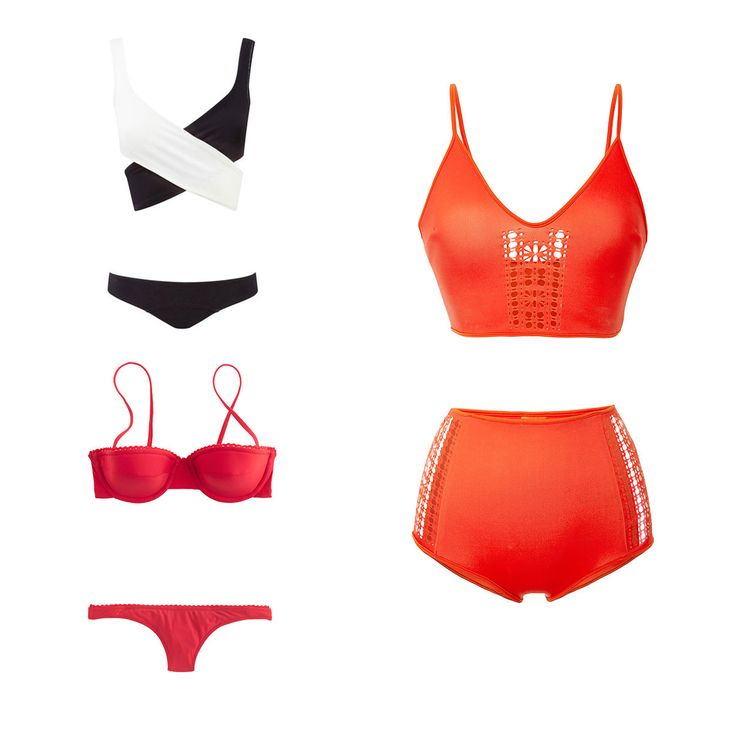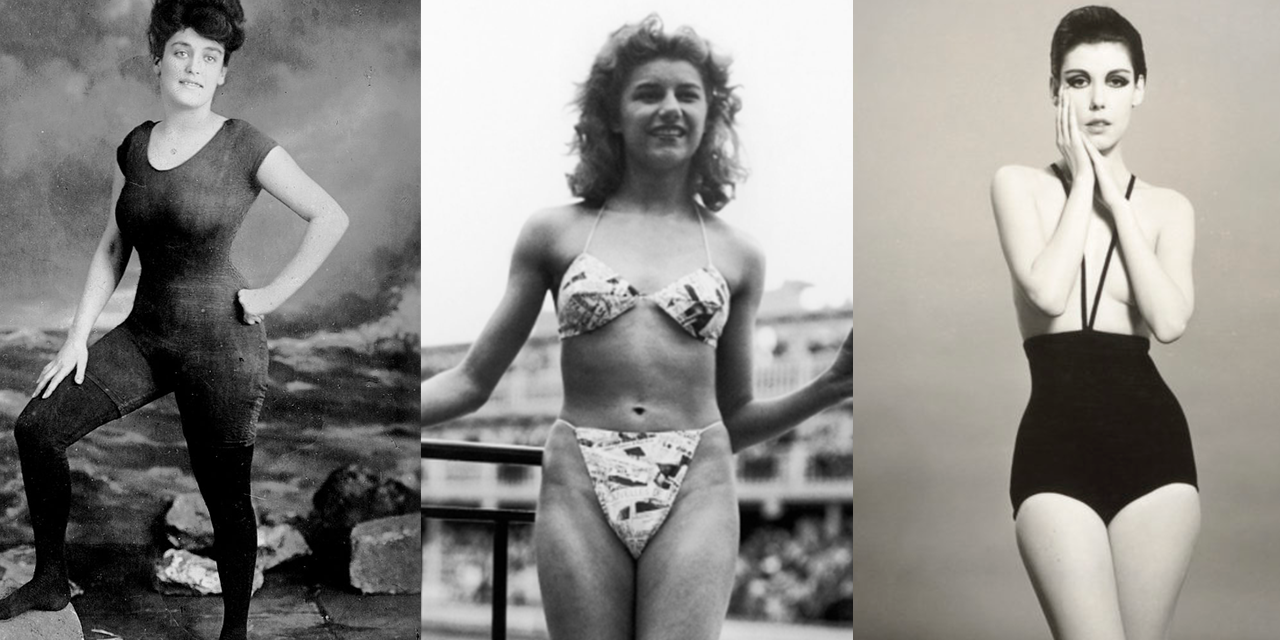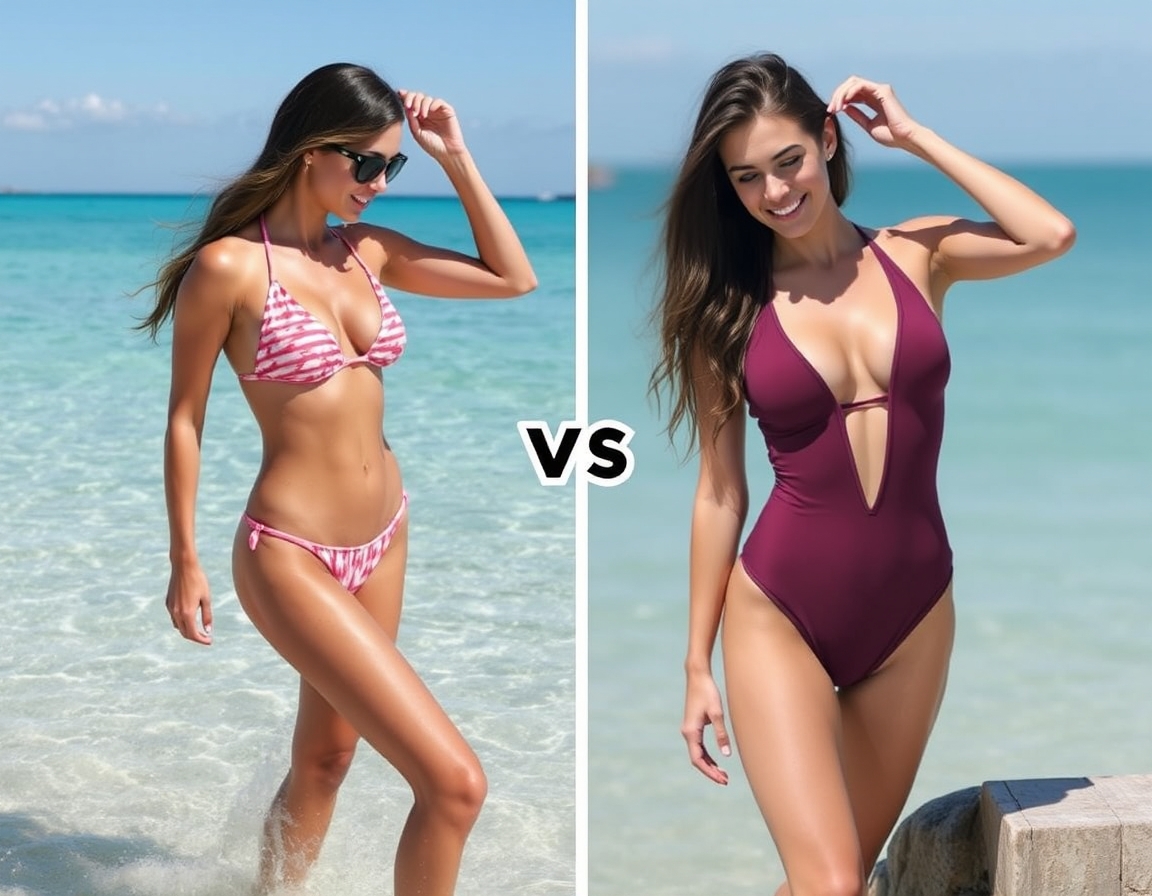Content Menu
● The Evolution of Swimwear
● The Psychology of Swimwear
● Fashion Trends and Designer Perspectives
● Cultural Influences and Body Positivity
● The Role of Context and Personal Style
● The Power of Confidence
● Conclusion
● Frequently Asked Questions
Discover the ultimate showdown between one pieces and bikinis - which style will reign supreme in the battle of sexy?
When it comes to swimwear, the age-old debate between one-piece swimsuits and bikinis has been a topic of discussion for decades. Both styles have their merits, and the question of which is sexier is subjective and often depends on personal preferences, body types, and cultural influences. In this article, we'll dive deep into the world of swimwear, exploring the history, psychology, and fashion trends that surround this intriguing question.

The Evolution of Swimwear
To understand the appeal of one-piece swimsuits and bikinis, we must first look at the evolution of swimwear throughout history. In the early 20th century, swimwear was primarily functional and modest. Women wore full-body bathing costumes that covered most of their skin, reflecting the conservative values of the time.
As societal norms began to shift, so did swimwear designs. The 1920s saw the introduction of more form-fitting swimsuits, which allowed for greater freedom of movement in the water. However, it wasn't until the 1940s and 1950s that we saw the emergence of the modern bikini and the transformation of the one-piece swimsuit into a more stylish and revealing garment.

The bikini, named after the Bikini Atoll where nuclear tests were conducted, made its debut in 1946. Designed by Louis Réard, it was initially considered scandalous and was banned in many countries. However, as the sexual revolution of the 1960s took hold, the bikini gained popularity and became a symbol of liberation and female empowerment.
Meanwhile, the one-piece swimsuit continued to evolve. Designers began experimenting with cuts, fabrics, and styles that accentuated the female form while maintaining a sense of elegance and sophistication. The iconic red one-piece worn by Pamela Anderson in the TV series "Baywatch" in the 1990s cemented the one-piece's status as a sexy and powerful swimwear option.
The Psychology of Swimwear
The choice between a one-piece swimsuit and a bikini often goes beyond mere fashion preferences. It can be deeply rooted in psychology, body image, and self-confidence.

Studies have shown that wearing swimwear can significantly impact a person's self-esteem and body image. The act of trying on swimsuits has been found to increase body shame and self-objectification in women. This phenomenon is often referred to as "swimsuit anxiety" and can affect women of all ages and body types.
Interestingly, the choice between a one-piece and a bikini can play a role in managing this anxiety. Some women feel more confident and comfortable in a one-piece swimsuit, as it provides more coverage and can be more forgiving to perceived body flaws. On the other hand, wearing a bikini can be an empowering experience for those who feel confident in their skin and want to celebrate their bodies.
The concept of "leaving something to the imagination" also comes into play when discussing the sexiness of one-piece swimsuits versus bikinis. A well-designed one-piece can create an air of mystery and allure, strategically revealing and concealing parts of the body. This subtle sexiness can be incredibly appealing and sophisticated.
Fashion Trends and Designer Perspectives
In recent years, the fashion industry has seen a resurgence of interest in one-piece swimsuits. Designers are creating innovative and daring one-piece designs that rival the sexiness of any bikini. High-cut legs, plunging necklines, cutouts, and backless styles have transformed the once-conservative one-piece into a bold fashion statement.

Many fashion experts argue that the sexiness of a swimsuit lies not in how much skin it reveals, but in how it enhances the wearer's confidence and natural beauty. A well-fitted one-piece can accentuate curves, create a sleek silhouette, and exude elegance in a way that a bikini sometimes cannot.
Moreover, the versatility of one-piece swimsuits has contributed to their growing popularity. Many styles can double as bodysuits, paired with shorts or skirts for a chic beach-to-bar look. This versatility adds to their appeal and can make them a more practical choice for many women.
Cultural Influences and Body Positivity
The perception of what is considered sexy in swimwear varies greatly across cultures and has evolved over time. In some societies, modesty is highly valued, making one-piece swimsuits the preferred choice. In others, the freedom and confidence associated with wearing a bikini are celebrated.

The body positivity movement has also played a significant role in reshaping perceptions of swimwear. This movement encourages people of all body types to feel confident and beautiful in whatever swimwear they choose. As a result, we're seeing a more diverse representation of body types in swimwear advertising and on beaches around the world.
This inclusivity has led to an expansion in swimwear options, with both one-piece and bikini styles being designed to flatter a wide range of body shapes and sizes. The focus has shifted from adhering to societal standards of the "perfect beach body" to celebrating individual beauty and comfort.
The Role of Context and Personal Style
When considering whether one-piece swimsuits are sexier than bikinis, it's essential to acknowledge the importance of context and personal style. What might be considered sexy in one situation could be inappropriate in another.
For instance, a sleek, black one-piece with subtle cutouts might be the epitome of sexy sophistication at a high-end resort pool, while a vibrant, patterned bikini could be the perfect choice for a fun day at a beach party. The sexiness of swimwear often lies in how well it suits the occasion and how confidently it is worn.

Personal style also plays a crucial role. Some women feel their sexiest in a classic, retro-inspired one-piece, while others prefer the freedom and playfulness of a bikini. The key is to choose swimwear that aligns with your personal aesthetic and makes you feel confident and comfortable.
The Power of Confidence
Ultimately, the sexiest swimsuit is the one that makes the wearer feel confident and comfortable. Confidence is universally attractive, and it shines through regardless of whether one is wearing a one-piece or a bikini.
Many fashion experts and psychologists agree that the most important factor in looking and feeling sexy in swimwear is not the style of the suit itself, but the attitude of the person wearing it. A woman who feels comfortable and confident in her swimwear will naturally exude sexiness, regardless of whether she's in a one-piece or a bikini.

Conclusion
So, are one-piece swimsuits sexier than bikinis? The answer is not a simple yes or no. Both styles have their merits and can be incredibly sexy in their own right. The sexiness of a swimsuit depends on a multitude of factors, including design, fit, the wearer's confidence, the context in which it's worn, and personal preferences.
The resurgence of the one-piece swimsuit in recent years has certainly challenged the notion that more skin equals more sex appeal. Modern one-piece designs have proven that they can be just as alluring, if not more so, than their two-piece counterparts. They offer a unique blend of elegance, mystery, and sensuality that many find irresistibly sexy.
However, the bikini remains a powerful symbol of confidence and freedom, and for many, it represents the ultimate in beach sexiness. Its ability to celebrate the female form in its most natural state continues to make it a popular choice for those who feel comfortable showing more skin.
In the end, the sexiest swimsuit is the one that makes you feel like the best version of yourself. Whether that's a daring cut-out one-piece, a classic triangle bikini, or anything in between, the most important thing is that you feel confident and comfortable in your choice. After all, true sexiness comes from within, and the most attractive quality anyone can wear is confidence.

Frequently Asked Questions
Q: Are one-piece swimsuits more flattering for all body types?
A: While one-piece swimsuits can be very flattering, there's no one-size-fits-all answer. Both one-pieces and bikinis come in a variety of styles that can flatter different body types. The key is to find a style that accentuates your best features and makes you feel confident.
Q: Can one-piece swimsuits be as revealing as bikinis?
A: Absolutely! Modern one-piece designs often feature high-cut legs, plunging necklines, cutouts, and backless styles that can be just as revealing as bikinis. The level of coverage is really up to personal preference and the specific design of the swimsuit.
Q: Are there any practical advantages to wearing a one-piece over a bikini?
A: One-piece swimsuits can offer some practical advantages. They often provide more support and coverage, which can be beneficial for active water sports. They're also less likely to shift or come undone in rough waves. Additionally, many one-pieces can double as bodysuits, making them versatile for beach-to-bar wear.
Q: How has the perception of one-piece swimsuits changed over time?
A: Historically, one-piece swimsuits were seen as more modest and conservative. However, in recent years, they've undergone a style revolution. Today, one-pieces are often viewed as chic, sophisticated, and sexy. They're no longer just the choice for those seeking modesty but are favored by fashion-forward individuals as well.
Q: Can wearing a one-piece swimsuit boost body confidence?
A: For many people, yes. One-piece swimsuits can provide more coverage and support, which can help alleviate body insecurities. However, body confidence comes from within, and the most important factor is choosing swimwear that makes you feel comfortable and confident, regardless of whether it's a one-piece or a bikini.
Q: What is the Difference Between One Piece Swimsuits and Bikinis?
A: One piece swimsuits and bikinis are two popular types of swimwear, but they look and fit differently. A one piece swimsuit is made from one piece of fabric that covers the whole body from the shoulders to the hips. It is perfect for swimming and playing in the water because it stays securely in place.
On the other hand, a bikini has two separate pieces: a top and a bottom. The bikini top covers the chest, while the bikini bottom covers the bottom. Bikinis can be sexier than one piece swimsuits, showing more skin. Some people prefer one piece swimsuits for their sporty look, while others love bikinis for their trendy styles.
Q: How Do I Know Which Swimwear Fits Me Best?
A: Finding the right swimwear is all about comfort and fit. When trying on swimwear, make sure it feels good and lets you move easily. If you can swim, dive, or play without feeling restricted, you've found a great fit! Remember, swimwear should not be too tight or too loose. It should hug your body gently without pinching your skin.
Also, don't forget to check the style! Some people like the look of one piece swimsuits, while others prefer bikinis. Choose what makes you feel comfortable and confident. If you're unsure, ask for help from a friend or a family member when choosing your swimwear.
Q: What are the Latest Fashion Trends in Swimwear?
A: Fashion trends in swimwear change from year to year, bringing new styles and colors to beachwear! Right now, bold colors and fun patterns are very popular. You might see bright floral prints, stripes, or even animal prints on both one piece swimsuits and bikinis.
Additionally, many swimwear designs are influenced by celebrities. When famous stars wear a particular style, it can quickly become a trend that everyone wants to follow. Always keep an eye out for what's new in fashion trends, as it can help you pick the coolest swimwear for your next trip to the beach!









































